Roy Miller's Blog, page 303
January 10, 2017
LitHub Daily: January 10, 2017
The Best of the Literary Internet, Every Day
More Story
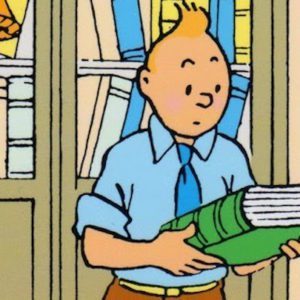
A Brief Guide to Tintinology
Tintin, everyone’s favorite intrepid Belgian boy reporter, made his first-ever appearance 88 years ago today, in a 1929 issue…
The post LitHub Daily: January 10, 2017 appeared first on Art of Conversation.
A Thriller Writer Takes a Literary Risk
My father-in-law, who lived to be 96, came to this country from Warsaw in early 1939, six months before Europe was plunged into war.
He never had any idea what fate befell his parents or any of his extended family; he was the only one to survive. His entire life, it was like he carried a weight around with him, a mantle of guilt and loss; peace seemed to elude him, despite his successes here. Like a lot of survivors, he never spoke a word to my wife or her brother about his family life back in Poland; the yoke of memory was just too hard to bear. He came here as a student, but in 1941, when the U.S. entered the war, he enlisted, and because of his facility with languages, he was placed in the Army Intelligence Corps. Similarly, he never divulged a word of what his duties were there.
As for me, I write suburban thrillers. Over the past decade, I’ve published nine of them, all about recognizable, everyday moms and dads in an upscale setting who, through either a momentary weakness or misstep, end up over their heads in something sinister. I’ve had success with them—five have made the New York Times bestseller list, and all but one have been Top 10 in the U.K.; I’ve been published in more than 20 countries.
But for several books now, I’ve felt pigeonholed by the narrow niche of what my publisher, and perhaps even my readers, expect from me: the familiar suburban setting, the root for–able yoga moms and hedge fund dads, the crisply paced plot-driven story lines with a coda of some emotional resonance at the end (a carryover, perhaps, from my days cowriting with James Patterson). It was how my publisher positioned me. There was a strategy and a goal. I went along willingly. I was writing good books—exciting, suspenseful. They were just not the books I had always intended to write.
My favorite stories growing up were the sweeping tales of the Persian-Greek and Trojan wars, the First Crusade, escapes from Devil’s Island, the clash of Napoleon and the tattered Russian army, Nazi conspiracies that lay buried in test tubes in Brazil or the search for ODESSA long after WWII—stories that transported you, not just grabbed you. Probably the book of mine that I recall with the most satisfaction, cowritten with James Patterson, was of a 12th-century peasant who comes back from the First Crusade to find his wife abducted and daughter slaughtered, and who dons the tattered tunic of a jester to avenge them.
The truth was I felt like I was perpetually pushing a boulder uphill, continually having to come up with fresh and gripping traps for my characters to fall into, in similar settings, with similar things at stake. I wanted to write books with bigger bones, broader themes, and richer, more atmospheric settings. I had come to a corner in my career, and my father-in-law’s story was staring me in the face. I decided to let the boulder fall.
The One Man is the story of an escaped Pole who is determined to return to Poland, where his parents were murdered by the Nazis, to rescue the one man the Allies believe can ensure their victory in the war. That man is an atomic physicist whose expertise is urgently needed on the Manhattan Project, but he’s imprisoned at Auschwitz. It’s a thriller in the sense that it’s about a near-impossible mission with a ticking clock, but it’s much richer in theme, more deliberate in characterization, and with a far more detailed setting than anything I have ever done.
Writing this kind of book was not without its risks. Would fewer publishers bid for it? Would some of my readers not follow me? As a Jew, taking on the Holocaust is an imposing responsibility, and it was an artistic risk. But I reminded myself that it was far less of a risk than getting into this business in the first place.
I have no idea if The One Man will deliver the crossover audience I am hoping for, or how it will stand up against the body of work already written on the Holocaust. I only know it came out richer and better than my most ardent hopes for it, and that my next books will continue in the same vein. And that my father-in-law, after reading a few chapters before he died last February, put it down with tear in his eyes, turned to my wife, and said, “Lynn, there are some things I’d like to talk to you about.”
Andrew Gross’s novel The One Man will be published on August 23 by Minotaur Books, a division of St. Martin’s Press.
A version of this article appeared in the 08/15/2016 issue of Publishers Weekly under the headline: Taking a Risk
The post A Thriller Writer Takes a Literary Risk appeared first on Art of Conversation.
January 9, 2017
Bookstore News: January 9, 2017
Amazon Books preps another physical store; B&N to shutter one in Minnesota; a used bookstore goes on the market in Arizona; and more.
Amazon to Open Bricks-and-Clicks in Paramus, N.J.: The retailer posted news of another Amazon Books, which is “coming soon” to Garden State Plaza in Paramus, N.J. This follows Amazon’s confirmation late last week that it will open a store in Manhattan, two stores in Boston, and one in Chicago later this year.
B&N to Close at Nicollet Mall: On the heels of a down holiday report, where comp sales fell 9%, the nation’s number two bookseller announced that it will close its 25,000 sq. ft. two-story store in downtown Minneapolis this spring. B&N wanted a smaller footprint, closer to 14,000 to 16,000 sq. ft., which the mall couldn’t accommodate.
Greater Boston Writers Resist, Counter-Inaugural Demonstration: On Martin Luther King Jr.’s birthday, Harvard Book Store will join PEN New England, Beacon Press, and other groups concerned about free expression in sponsoring an afternoon of readings and performances at the Boston Public Library. The event is one of 50 that will be held on three continents five days before Donald Trump is sworn in as president.
SUV Crashes into Comic Bookstore in Huntsville, Ala.: On Friday a man who had a seizure turned DeePComics & Games into a drive-thru as his SUV crashed through the window and sped through the shop.
I Love Books Bookstore Turns 50: The Kingsport, Tenn., new, used, and rare bookstore is celebrating “all things Kingsport” during its fiftieth year and the centennial of the city.
Books By the Sea on Cape Cod Is Moving: The bookstore held a moving sale late last month and is now closed while it relocates from Osterville to the Bell Tower Mall in Centerville, where it will reopen February 1. Grand opening events are planned for Presidents Day weekend (February 18-20).
The Bookery for Sale: The ten-year-old used bookstore inside the Yuma Indoor Marketplace in Yuma, Ariz., went on the market over the weekend. The owner is retiring due to health issues and the loss of a business partner.
Wider Than the Sky Bookstore and Toy Store to Close: The 11-year-old Newport, Vt., store is closing. It posted an announcement on Facebook last week with a note that Diane Jameson is retiring.
The post Bookstore News: January 9, 2017 appeared first on Art of Conversation.
How Long Until You Can Follow Up on Magazine Query Letters?
Q: I e-mailed a query to a magazine editor three weeks ago and haven’t heard from him. The writer’s guidelines state, “Don’t call us; we’ll call you if we want to use your piece.” How long should someone wait to hear back from an e-mail query? Is it appropriate to send the query again and indicate that this is a follow-up? —Ruth A.
A: If the writer’s guidelines state, “Don’t call us; we’ll call you,” my hunch is that the editor contacts only the authors whose pieces he plans to use. This is a bit unorthodox, as most magazines will send you (at minimum) a polite, yet standard, rejection letter if they choose not to use your work.
It’s important to keep in mind that while the Internet/e-mail age has sped up the querying process on the writer’s end, it hasn’t necessarily sped up the response time of publishers—mainly because most are inundated with even more queries than before (because of the ease of e-mail) and most publishers have smaller staffs than they did even five years ago. So three weeks is not much time by publishing standards.
[Learn about Freelance Writing: 10 Ways to Satisfy Editors & Land More Assignments]
As far as I see it, you have two realistic options: 1. Wait at least eight weeks, then nicely follow up by resending your query with a friendly note checking up on its status; or 2. If your query could fit other magazines, start shopping the idea to them. Should one accept it, then send a note to the “don’t call us” editor and withdraw your idea from consideration. If it were me and there were other potential markets, I’d go with option 2—it gives you a better chance of placing the work. If it’s too narrow for anyone else, go with option 1.
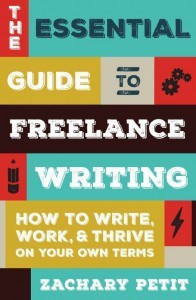 Learn everything you need to know about developing
(and sustaining)
Learn everything you need to know about developing
(and sustaining)
a freelance writing career with The Essential Guide to Freelance Writing,
a new,
must-own guide for all writers. Order now!
Thanks for visiting The Writer’s Dig blog. For more great writing advice, click here.

Brian A. Klems is the editor of this blog, online editor of Writer’s Digest and author of the popular gift book Oh Boy, You’re Having a Girl: A Dad’s Survival Guide to Raising Daughters.
Follow Brian on Twitter: @BrianKlems
Sign up for Brian’s free Writer’s Digest eNewsletter: WD Newsletter
Listen to Brian on: The Writer’s Market Podcast
You might also like:
The post How Long Until You Can Follow Up on Magazine Query Letters? appeared first on Art of Conversation.
A Brief Survey of the Great American Novel(s)
On this date in 1868, novelist John William DeForest coined the now inescapable term “the great American novel” in the title of an essay in The Nation. Now, don’t forget that in 1868, just a few years after the end of the Civil War, “America” was still an uncertain concept for many—though actually, in 2017 we might assert the same thing, which should give you a hint as to why the term “great American novel” is so problematic.
At the time of his writing, DeForest claimed that the Great American Novel, which he defined as “the picture of the ordinary emotions and manners of American existence,” had not yet been achieved, though he thought he could spot it on the horizon—he noted that Uncle Tom’s Cabin was “the nearest approach to the desired phenomenon.” (He also pooh-poohed both Hawthorne’s The Scarlet Letter and Cooper’s The Last of the Mohicans, which is why, though others have dubbed them GANs, they don’t appear below.)
In the nearly 150 years since the essay was written, the argument over the Great American Novel—what it is, what it should be, do we have one, do we need one, why so many white men—has gone on and on. As A.O. Scott memorably put it, “the Great American Novel, while also a hybrid (crossbred of romance and reportage, high philosophy and low gossip, wishful thinking and hard-nosed skepticism), may be more like the yeti or the Loch Ness monster—or Sasquatch, if we want to keep things homegrown. It is, in other words, a creature that quite a few people—not all of them certifiably crazy, some of them bearing impressive documentation—claim to have seen.” Indeed, many, many books have been sighted—er, called—the Great American Novel, or at least one of them, or at least a great American novel, which is a decidedly different thing. Which ones? Who said it? Does it matter? Is this map accurate? Read on.
NB* There is no way to actually catalogue every single book that has ever been called a Great American Novel anywhere. This list compiles many of the books often cited as such, accompanied by a quote from a reputable source.
Article continues after advertisement
THE CONTENDERS
F. Scott Fitzgerald, The Great Gatsby
Gatsby’s magic emanates not only from its powerhouse poetic style—in which ordinary American language becomes unearthly—but from the authority with which it nails who we want to be as Americans. Not who we are; who we want to be. It’s that wanting that runs through every page of Gatsby, making it our Greatest American Novel. But it’s also our easiest Great American Novel to underrate: too short; too tempting to misread as just a love story gone wrong; too mired in the Roaring Twenties and all that jazz.
–Maureen Corrigan, So We Read On: How The Great Gatsby Came to Be and Why It Endures, 2014
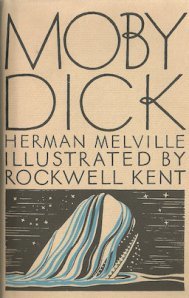
Herman Melville, Moby-Dick
Among all Great American Novel candidates, perhaps Moby-Dick (1851) best meets Nobel laureate J.M. Coetzee’s test. [“As long as the classic needs to be protected from attack, it can never prove itself classic.”] At least for now, the case for Moby-Dick seems to need least defense. … Moby-Dick‘s dissemination as text, and its fertility as object of imitation, as icon, as logo, as metaphor, have no more stopped at the nation’s borders than the Pequod did.
–Lawrence Buell, The Dream of the Great American Novel, 2014

Harper Lee, To Kill a Mockingbird
[T]he Great American Novel is a moving target and that the space is filled by a novel that in any particular time best fulfills three main criteria:
Ubiquity: It has to be a novel that a relatively large number of Americans have read, and that a large proportion of those who haven’t read it know about in other ways (for example, by a popular filmed adaptation).
Notability: There has to be a general agreement that the novel is significant—it has literary quality and/or is part of the cultural landscape in a way that’s unquestionable (even if critically assailable).
Morality: It needs to address some unique aspect of the American experience, usually either our faults or our aspirations as a nation, with recognizable moral force (not to be confused with a happy ending).
…
Which is why, right now, the Great American Novel is To Kill a Mockingbird by Harper Lee, with F. Scott Fitzgerald’s The Great Gatsby and The Scarlet Letter by Nathaniel Hawthorne as runners-up. Are these the best American novels? That’s subjective (I vote no), but they were on the reading list when I was in high school, and now, 30 years on, when my daughter is. They are a common American experience—one of the few we still have.
–John Scalzi, Los Angeles Times, 2016

Mark Twain, The Adventures of Huckleberry Finn
There was no sense [upon its publication] that a great American novel had landed on the literary world of 1885. The critical climate could hardly anticipate T. S. Eliot and Ernest Hemingway’s encomiums 50 years later. In the preface to an English edition, Eliot would speak of “a master piece. … Twain’s genius is completely realized,” and Ernest went further. In “Green Hills of Africa,” after disposing of Emerson, Hawthorne and Thoreau, and paying off Henry James and Stephen Crane with a friendly nod, he proceeded to declare, “All modern American literature comes from one book by Mark Twain called Huckleberry Finn. … It’s the best book we’ve had. All American writing comes from that. There was nothing before. There has been nothing as good since.” … What else is greatness but the indestructible wealth it leaves in the mind’s recollection after hope has soured and passions are spent? It is always the hope of democracy that our wealth will be there to spend again, and the ongoing treasure of Huckleberry Finn is that it frees us to think of democracy and its sublime, terrifying premise: let the passions and cupidities and dreams and kinks and ideals and greed and hopes and foul corruptions of all men and women have their day and the world will still be better off, for there is more good than bad in the sum of us and our workings. Mark Twain, whole embodiment of that democratic human, understood the premise in every turn of his pen, and how he tested it, how he twisted and tantalized and tested it until we are weak all over again with our love for the idea.
–Norman Mailer, The New York Times, 1984

Thomas Pynchon, Mason & Dixon
Let’s make this a whole lot easier. After Twain and Fitzgerald, there’s Thomas Pynchon and there’s everybody else. When we ask about the Great American Novel, what we’re really asking is, which of Pynchon’s novels is the most American?… The author’s most obvious candidate for the Great American Novel would seem to be Mason & Dixon, a playfully archaic picaresque about the two 18th-century surveyors who drew the “geometrick Scar” along which, during the Civil War, America almost bled out. But the G.A.N. could just as easily be one of Pynchon’s other works, each of which rings a fresh variation on the same two questions: What happened to the country we wanted? And can its original promise ever be redeemed?
–David Kipen, Los Angeles Times, 2016
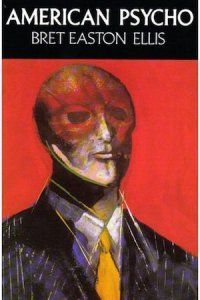
Bret Easton Ellis, American Psycho
With the glorious Fourth looming dead ahead, it’s an excellent time to play the home version of this game: What’s your pick for Great American Novel? Not the best novel written by an American. Rather, the best novel written by an American that most clearly reflects the spirit, character and destiny of America, both its good and bad sides, its mistakes and its triumphs. It’s more than a game, of course. Selecting a novel that encapsulates a nation’s soul is a sneaky means of interrogating your deep beliefs about the place, your prejudices and your expectations. … Still, for the purpose of being cantankerous and starting arguments with the many kind folks who e-mail me, I’m momentarily partial to the violent incantations of American Psycho. Reviled upon its initial publication for its gleeful gore, Ellis’s novel about an unrepentant serial killer strikes me these days as witty and knowing. It’s filled with brand names and sex and social anxiety, a triumvirate typically ignored by novels that focus only on a narrator’s interior journey. For this precious nanosecond, then, I’m going with American Psycho.
–Julia Keller, Chicago Tribune, 2007
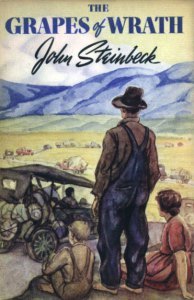
John Steinbeck, The Grapes of Wrath
Today marks the 69th anniversary of Steinbeck’s The Grapes of Wrath, which for my dime is the 20th century’s “Great American Novel.” Personally, I like Gatsby and For Whom the Bell Tolls better, but Gatsby is somewhat of an unbelievable character (he’s not the type of guy you’re ever likely to meet) and the Hemingway isn’t set in the US. Grapes is a distinctly American book relating a dark chapter in our history, and Tom Joad and Ma Joad, the all-time great mother character, are people you might meet. … Steinbeck captured the American nature of the real people, the hard-working, regular guys “just trying to get along without shoving anybody” as Tom says that Scott and Ernesto never did.
–Michael Rogers, Library Journal, 2008

Don DeLillo, Underworld
From its first appearance in October 1997, a moment I remember well as the Observer’s literary editor, Underworld was spoken of as a towering performance and hailed as that elusive literary hippogriff, the great American novel. In his review, the novelist William Boyd wrote, “In Underworld, we have a mature and hugely accomplished novelist firing on all cylinders… reading the book is a charged and thrilling aesthetic experience and one remembers gratefully that this is what the novel can do.” The Observer also described it as “an epic to set alongside Moby-Dick and Augie March” (Nos 17 and 73 in this series). Such ideas were possibly reinforced by DeLillo’s quotable opening line: “He speaks in your voice, American, and there’s a shine in his eye that’s halfway hopeful.”
–Robert McCrum, The Guardian, 2015
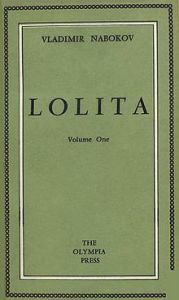
Vladimir Nabokov, Lolita
Some say the Great American Novel is Huckleberry Finn, some say it’s The Jungle, some say it’s The Great Gatsby. But my vote goes to the tale with the maximum lust, hypocrisy and obsession—the view of America that could only have come from an outsider—Nabokov’s Lolita. … What makes Lolita a work of greatness isn’t that its title has become ingrained in the vernacular, isn’t that was a generation ahead of America in fetishizing young girls. No, it is the writing, the way Nabokov bounces around in words like the English language is a toy trunk, the sly wit, the way it’s devastating and cynical and heartbreaking all at once. Poor old Dolly Haze might not have grown up very well, but Lolita forever remains a thing of timeless beauty.
–Mary Elizabeth Williams, Salon, 1996
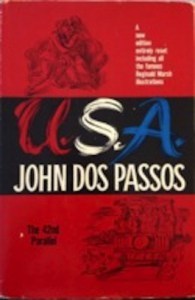
John Dos Passos, U.S.A.
The Great American Novel is no longer writable. We can’t do what John Dos Passos did. His trilogy on America came as close to the Great American Novel as anyone. You can’t cover all of America now. It’s too detailed. You couldn’t just stick someone in Tampa without knowing about Tampa. You couldn’t get away with it. People didn’t get upset if you were a little scanty on the details in the past. Now all the details get in the way of an expanse of a novel.
–Norman Mailer, Poynter, 2004
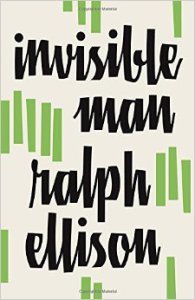
Ralph Ellison, Invisible Man
It is Invisible Man. No, it was not written by a Nobel Laureate or Pulitzer Prize winner, nor has it been around for centuries. It is a novel of substance, of layers and riffs. It might even be said to be the greatest American novel.
The greatness of Ralph Ellison’s Invisible Man (1952) comes from being many things to many readers. A racial epic. A bildungsroman in the form of a dramatic monologue. A rich psychological portrait of racial identity, racism, history, politics, manhood, and conflicted personal growth. An elusive story of and by an elusive, nameless narrator. A jazz-like play on literature, music, society, memory, and the self. A product of a voracious reader and writer. Somehow, it is all of these, perhaps one of the reasons it netted the National Book Award over The Old Man and the Sea and East of Eden.
–Joseph Fruscione, The Millions, 2013
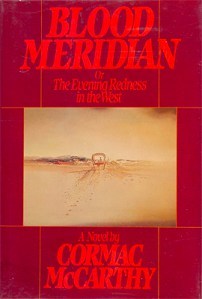
Cormac McCarthy, Blood Meridian
A great American novel can only be anti-American, and Blood Meridian, like Toni Morrison’s Beloved, focuses on our greatest shames, in this case our genocides and our desire for war, contemplating in its final chapters the slaughter of the buffalo; also the slaughter of innocence in the form of a dancing bear, and the slaughter of any would-be penitents, including the kid. The last look west has to see nowhere else to go.
–David Vann, The Guardian, 2009
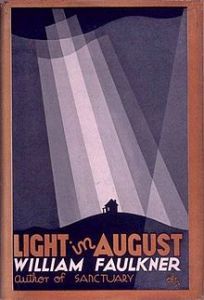
William Faulkner, Light in August
Light in August, published in 1932, is Faulkner’s Great American Novel. It was the seventh of what would be 19 novels, an output that was awarded the Nobel Prize in 1949 and that, to borrow a hackneyed but apt phrase, represents nothing less than an embarrassment of riches. A writer of prodigious powers, Faulkner bequeathed to readers a rich fictional panoply of complex characters, incisive social commentary, formal ingenuity, and metaphorical depth. His oeuvre displays an unsentimental compassion, a tragedian’s unblinking vision, and an almost preternatural insight into human motivation and desire. He left behind two highly influential masterpieces of modernist fiction: The Sound and the Fury and As I Lay Dying, works that, along with other modernist texts, radically altered conceptions of narrative linearity and the formal depiction of consciousness. Absalom, Absalom!, often mentioned in the same breath, is celebrated by many as his greatest, most fully realized novel, one of tremendous breadth and a radical consistency of aesthetics. But it is the less mannered Light in August, sometimes overlooked in discussions of his more overtly modernist works, that draws all of Faulkner’s familiar preoccupations—determinism vs. free will, the partially Reconstructed South, religiosity, the draw of female sexuality, and the power of the living past—around one overriding, ineradicably American concern: race.
–C.E. Morgan, The Daily Beast, 2012

William Faulkner, Absalom, Absalom!
In January 1936, William Faulkner had just completed his latest novel and begun his latest drinking binge. He handed the new manuscript to a friend and said, “I want you to read this. … I think it’s the best novel yet written by an American.”
It sounded like the bourbon talking, but Faulkner was right. Still is. The fellow whom Faulkner had met while working for Warner Bros. held in his hands the world’s only copy of what would become—after some revision—Absalom, Absalom!, the publication of which should have by now settled the question of what is The Great American Novel. It is Faulkner’s ninth and best novel, Absalom, Absalom!
Novelist Frank Norris wrote in 1902 that The Great American Novel was pure myth, a hybrid creature that could never exist. He argued well, but too soon, years before the appearance of Absalom, which would have proved him wrong.
–Arthur Hirsch, The Baltimore Sun, 1997
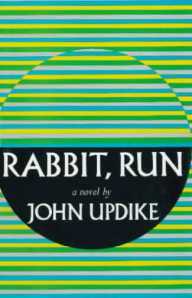
John Updike, Rabbit, Run
To consider the 1,700-odd pages of his Harry Angstrom saga—the bounding tetralogy of Rabbit books and their limping postscript—is to find yourself considering a work with an excellent claim as the Great American Novel, but you’d be forgiven for preferring to spend time with four or five Very Good ones.
–Troy Patterson, Slate, 2009

David Foster Wallace, Infinite Jest
It was in 1996 that Wallace arrived; I never saw anything quite like it before, and I do not expect to again. For some years there had already been murmurs and hints about the arrival of a massive new contender for Great American Novel, or at least Decade-Defining Doorstop; a huge, Pynchonesque, unsummarizable, labyrinthine, comic-tragic-ironic book about tennis and addiction that some math geek from Illinois had been brazen enough to call “Infinite Jest.” Books columnists talked about it like Ahab murmuring about the whale; one couldn’t help but be curious.
–Colby Cosh, National Post, 2008
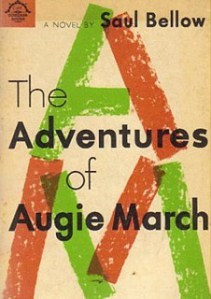
Saul Bellow, The Adventures of Augie March
The Adventures of Augie March is the Great American Novel. Search no further. All the trails went cold forty-two years ago. The quest did what quests very rarely do: it ended. … Augie March, finally, is the Great American Novel because of its fantastic inclusiveness, its pluralism, its qualmless promiscuity. In these pages the highest and lowest mingle and hobnob in the vast democracy of Bellow’s prose. Everything is in here, the crushed and the exalted, and all the notches in between, from the kitchen stiff… to the American eagle.
–Martin Amis, The Atlantic Monthly, 1995
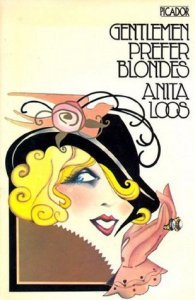
Anita Loos, Gentlemen Prefer Blondes
[I am] now reading the great American novel (at last!) and I want to know if there are—or will be—others and if you know the young woman [who wrote it], who must be a genius.
–Edith Wharton, “The Great American Novel,” Yale Review, 1927
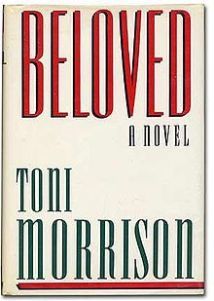
Toni Morrison, Beloved
When The New York Times Book Review asked 125 writers to name the best work of American fiction from the preceding 25 years (this was in 2006), Beloved came out on top.
“Any other outcome would have been startling, since Morrison’s novel has inserted itself into the American canon more completely than any of its potential rivals. With remarkable speed, Beloved has, less than 20 years after its publication, become a staple of the college literary curriculum, which is to say a classic. This triumph is commensurate with its ambition, since it was Morrison’s intention in writing it precisely to expand the range of classic American literature, to enter, as a living black woman, the company of dead white males like Faulkner, Melville, Hawthorne and Twain. When the book first began to be assigned in college classrooms, during an earlier and in retrospect much tamer phase of the culture wars, its inclusion on syllabuses was taken, by partisans and opponents alike, as a radical gesture. (The conservative canard one heard in those days was that left-wing professors were casting aside Shakespeare in favor of Morrison.) But the political rhetoric of the time obscured the essential conservatism of the novel, which aimed not to displace or overthrow its beloved precursors, but to complete and to some extent correct them.”
–A.O. Scott, The New York Times Book Review, 2006
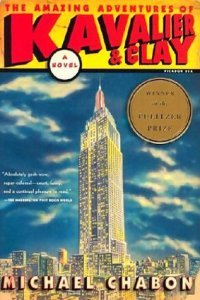
Michael Chabon, The Amazing Adventures of Kavalier and Clay
I’m not sure what the exact definition of a “great American novel” is, but I’m pretty sure that Michael Chabon’s sprawling, idiosyncratic, and wrenching new book is one. Despite the flippant Marvel Comics title (this is, after all, a novel about comic books and their makers), The Amazing Adventures of Kavalier & Clay is preoccupied with vast and sober American themes: the meaning and mechanics of cultural assimilation, the search for moral and emotional identity in an indifferent world, the transformative role of popular entertainment in the lives of individuals and the nation itself. Oh, and did I mention love, death, guilt, and redemption? Yep—those too.
–Daniel Mendelsohn, New York Magazine, 2000

Jonathan Franzen, Freedom
(Franzen’s face on the TIME with the headline “Great American Novelist” could be credential enough, but just in case)
“The whole package, unashamedly generous of heft (it weighs in at over 550 pages) and heart, adds up to a rare pleasure, an irresistible invitation to binge-read, to devote the kind of time to a book that we tend more often these days to reserve only for work, sleep, or marathon viewing sessions of DVD box-sets. That it also grapples with a fundamental dilemma of modern middle-class America—namely: Is it really still OK to spend your life asserting your unalienable right to the pursuit of happiness, when the rest of the world is in such a state?—is what makes it something wonderful. If Freedom doesn’t qualify as a Great American Novel for our time, then I don’t know what would. … It is the first Great American Novel of the post-Obama era.”
–Benjamin Secher, The Telegraph, 2010
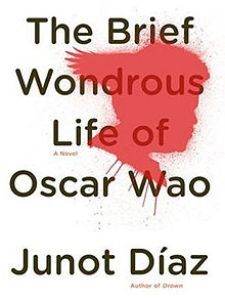
Junot Díaz, The Brief Wondrous Life of Oscar Wao
Six months before its official release in 2007, the galley arrived in my mailbox. I was on my way to Switzerland, so I almost passed on reviewing the book because of its length—I had promised myself I was going to dedicate my writing time in Europe to my own work. But on impulse I decided to accept the assignment, if anything, as an excuse to read the long-anticipated novel by the author of Drown. When I finally picked up the book, I knew I held something special in my hands. This was a book of the Américas. This was the Great Américas Novel.
I have come across enough conversations about “The Great American Novel” to understand that these don’t consider an author like Díaz, a book like The Brief Wondrous Life of Oscar Wao, whose immigrant journey travels vertically, not horizontally, whose cultural identity is cultivated by a pan-American consciousness. Book nerd Oscar de León moves through contemporary New Jersey, while his family history calls him from the Dominican Republic’s troubled past, and when the two narratives converge the quintessential 20th-century antihero is born.
The Great Américas Novel considers the big lives of those people American literature has marginalized. Even in the comic books and sci-fi stories that shape Oscar’s worldview the central characters are white, so he completes his identity and perspective with family lore—the multigenerational fukú curse, and all that footnoted content about the Dominican Republic’s Trujillo dictatorship that becomes relevant to the primary exposition as the narrative unfolds.
–Rigoberto González, Los Angeles Times, 2016

Steve Erickson, These Dreams of You
For all its close and intimate focus, These Dreams of You may well be today’s Great American Novel. Not just for its portraiture of universal American dreams and anxieties; not for its social scope; nor for its historical and political topicality, in which it deals in spades, but rather because of its painful sincerity, its humble recognition of human failings, and its continued hope that it is not too late.
–Pawel Frelik, Los Angeles Review of Books, 2012
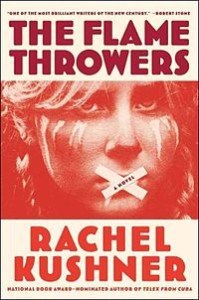
Rachel Kushner, The Flamethrowers
The Flamethrowers is mold-breaking, not only because it is written by a woman but also because its central character is a woman. In the books most often cited as candidates for the Great American Novel, male characters—Jay Gatsby, Huckleberry Finn, Ahab—have played that role, representatives, presumably, of the American experience. But (and do I really even need to say it at this stage?), the notion that a female figure might serve the same purpose undermines the very concept of the Great American Novel. Men are allowed to stand for the entirety of a national identity or for humanity itself, but women are only supposed to stand for womanhood, if in various flavors.
This is not to say that Kushner overtly presents Reno as the quintessential American, although the character’s trajectory is as aspirational in its own way as Gatsby’s and she seeks a rupture with the past as decisive as Huck’s (even if she lights out in the opposite geographical direction). In fact, Reno’s problems are very much a young woman’s problems. She is in danger of coasting on her physical allure and prone to attaching herself to decisive men in order to obtain the forward momentum she professes to crave. Taking a job at a film lab, she poses as a “China girl” on film leaders, one among any number of female faces whose skin tones provide a base line for color correction by technicians, “real but unreachable women who left no sense of who they were.” It’s the worst form of a representative identity: both generic and anonymous, a means to an end, an everywoman who is nobody.
–Laura Miller, Salon, 2013
So now, to this not exhaustive but certainly long list, I say: what about Hanya Yanagihara’s A Little Life? What about Jennifer Egan’s A Visit From the Goon Squad? Chimamanda Ngozi Adichie’s Americanah (who says you have to actually be American to write a Great American Novel)? Ben Lerner’s 10:04? Louise Erdrich’s Love Medicine? Sylvia Plath’s The Bell Jar (what if her protagonist were a man)? Katherine Dunn’s Geek Love? Surely all of these give the reader a “picture of the ordinary emotions and manners of American existence”—all depending on what your idea of “ordinary” is, of course. But maybe the fact that there is no ordinary in this country is exactly why the GAN continues to elude, perplex, and enchant the American writer.
The post A Brief Survey of the Great American Novel(s) appeared first on Art of Conversation.
An Accidental Novelist
In September, my debut novel, A Boy Made of Blocks, will be published in 25 countries. This was a complete accident. In February 2015, I was sitting at my desk in the London office of the Guardian newspaper, cursing the fact that the train back to my home in Frome, Somerset, was running an hour late. I’ve been a journalist for 20 years, mostly writing about video games (yes, that is an actual job), and as the Guardian’s video game editor, I tend to write every day for the paper’s website. That particular afternoon, having read a slightly snide article about Marcus “Notch” Persson, the creator of the wildly successful computer game Minecraft, I decided to write a personal piece of admiration for this guy and his game.
Minecraft lets players create vast buildings, explore mines, and fight zombies; and has been downloaded over 100 million times, one of the most successful games of all time. For me, it’s the game that helped my young autistic son learn, communicate, and discover his creativity.
As a six-year-old with a limited vocabulary and working memory, he was really struggling to talk to us, and it was difficult to engage him with normal books and games. But when he first saw Minecraft, it just made sense to him, and we spent many joyful hours playing the game together as a family. I channeled all of this into an article, posted it on the Guardian site, and caught my train.
Once in a while as a journalist, you write something that genuinely resonates, and this quick, emotional eulogy to a video game and its role in my family did just that. We had hundreds of comments from Minecraft fans and their parents, about the game and how it had helped them.
Then I got an email from Ed Wood, a senior editor at Little, Brown in the U.K., asking if I’d thought about writing a novel with similar themes: a father and autistic son bonding over Minecraft. I hadn’t, but I met with Ed, whose own son is on the autism spectrum, submitted a synopsis and a few sample chapters, and a couple of weeks later I had a two-book deal.
This, I have been led to believe, is not a typical publishing scenario. The cliché for debut novelists is a decade spent drafting and redrafting a book before trudging around dozens of publishing houses, building an impressive collection of rejection slips. After 20 years in paid writing, the idea of sinking years of my life into a project that had little chance of financial recompense was just not going to happen—I had kids, I had a mortgage, I had a lot of video games to play.
In the end, novel writing found me, and I think that says a lot about the sorts of stories people are interested in these days, and the way publishers have to discover them. The nature of mainstream entertainment has radically changed in the past five years. Reality TV has transformed our notion of narrative drama; YouTube and Twitch, the social video platform for gamers, have made celebrities out of average kids, completely bypassing the traditional routes to celebrity; Netflix and Amazon Prime have changed the way television works; and, of course, social media has radically altered the notion of mass communication. Stories come to us now in strange viral waves, carried by memes, links, GIFs, and Vines—these days, you could film yourself falling off a skateboard one morning and be signing a movie deal the next. Stories are now made and shared from raw, lived experiences, and publishers have to be able to move in quickly and embrace these cathartic snapshots. YouTubers are being signed to big book deals; they’re communicating with massive audiences on vast digital networks. But both they, and their millions of fans, appreciate the validating, intimate experience of opening and reading a book.
I became a novelist by mistake. That shouldn’t be possible, but it is now, simply because the world has changed how it shares stories and experiences. After all, traditional media is becoming more and more varied: bookshops are turning into meeting places and venues; online newspapers are aggregating and explaining viral trends. Ed Wood at Little, Brown thought I could be an author; I thought he was crazy, but he proved me wrong. I don’t think it’s the last time something like that will happen. I think it may be the future.
Keith Stuart is the games editor for the Guardian. His debut novel, A Boy Made of Blocks (St. Martin’s), publishes in September.
A version of this article appeared in the 08/22/2016 issue of Publishers Weekly under the headline: An Accidental Novelist
The post An Accidental Novelist appeared first on Art of Conversation.
How to find your novel’s structure
As a novelist, you must handle elemental fictional elements – character, plot and setting – with artistry and polish. Your prose style must be engaging, your scenes energizing, your writing vivid. None of that can work without structure, however. Peter Behrens, author of Carry Me, puts it this way: “Be aware that novels tend to be composed of, first, scenes, and, second, summary. The point is to try to find the balance.”
Balance must be achieved at all levels of your work, with crucially placed drama points that provide emphasis and effective pacing.
Let’s begin with overall structure: the skeletal framework of a novel.
You might choose the classic five-stage plot structure: exposition, rising action, climax, falling action and resolution.
You might also choose the three-act structure – setup, confrontation, resolution – familiar to screenwriters. Both structures can be rigid, although novelistic structure can also be loose as long as it includes some sort of beginning, middle and end. What is drama without these three fundamentals, as Aristotle makes abundantly clear in his Poetics? Where is the story?
“I suspect that for the most part, I fall into the traditional five-stage plot structure intuitively, and that’s likely due to my exposure to the predominant plot structure in the Western literary tradition,” says Julie Iromuanya, author of Mr. and Mrs. Doctor. Departures from this traditional structure are always risky, she adds.
Margaret Verble, author of Maud’s Line, says that the five-stage story structure remains “the best structure on which to hang a tale.” Only seasoned writers, she says, should consider experimenting with “funky structures.” Beginning writers should avoid them.
However tried and true the five-stage plot structure, authors find reasons to make slight departures from it. In his debut novel The Sympathizer, Viet Thanh Nguyen deviates in a minimal but important way.
“I was aware of the five-stage plot structure, partially through long exposure to it as a student and partially because I wanted my novel to work as genre fiction in addition to being literary fiction,” he says.
Yet Nguyen deviates from traditional when a mid-novel interlude veers off the “explicit narrative of a spy caught in history.” Here, Nguyen’s spy becomes a film consultant on an epic Vietnam War movie shot in the Philippines.
“Perhaps this was a digression from the five-stage plot,” he says, “but I couldn’t help myself. This was my revenge on Hollywood’s Vietnam War, and I was going to take it.”
Although this interlude breaks with the “straightforward action” typical of the five-stage story, it serves to enhance this traditional structure.
“The climax and denouement of the section in the Philippines, halfway through the novel, foreshadows the climax and denouement of the entire novel toward the end,” says Nguyen.
The interlude underscores Nguyen’s final authority in the structure department. In the end, the author has to be true to his creativity.
When drafting a novel, Behrens never thinks in structural terms. He doesn’t fixate on plot. Instead, he follows characters, sometimes having “a vague sense of the place where the characters end up – their moral, mental, emotional, tactile and sensual surroundings at the end of the story.”
For him, writing a novel is “trying to learn more about that place and figuring out how [characters] got to that place from where they started.” The first draft goes fast. In the revision stage, Behrens turns a critical eye to structure.
“When I see the thing as a whole for the first time and know the story,” says Behrens, “I go back to the storytelling and try to establish a structure that will keep the story moving at the right pace, engage the reader and get to where I want to go.”
He learned about story structure from his screenwriting background and in post-production editing.
“There are a zillion ways to cut a story up and assemble it,” he says. “The movie is made in the editing room.” Behrens speculates that the structure of Carry Me emerged when he “started scissoring it apart and reassembling it.”
Bernice L. McFadden, author of Sugar and eight other novels, also doesn’t focus on structure in a first draft. For her, it’s best to let the story unfold instead of working with a linear approach. Often she writes the ending before the beginning.
“If the rising action comes early on,” says McFadden, “I write it down and build the exposition around it.” When she reads drafts, McFadden is confident that “the structure will unquestionably reveal itself.”
Usually, it’s not the standard five-stage plot – more like “piecing a puzzle together,” she says – but it does include a beginning, middle and end.
Outside of traditional plot structures, character development also affects structure.
If you’re writing a character-driven versus a plot-driven story, your characters must be “multi-layered, much like an onion,” says McFadden, or “round,” as E. M. Forster says in Aspects of the Novel.
“How and when you choose to peel back a layer to reveal another quality or trait of said character is just as important to the story as rising action, falling action and climax,” says McFadden.
You mustn’t unload a multi-faceted character in one fell swoop. Good character revelation is a matter of judicious timing – and that’s structure.
A protagonist’s “active goal,” says Verble, will serve as a major organizing device for a novel. It is, she says, “the muscle of the story, the conflict between what the character wants, or thinks she wants, and the obstacles, both external and internal, thrown in the way.”
Verble holds that this crucial structural device should be evident “in clear language” early in the novel. By page three in Maud’s Line, the reader learns about the main character’s situation, what she wants and her need to be free from “meanness and violence.” This structural device, says Verble, keeps both writer and reader on track.
The character arc is ultimately generated from the character’s active goal, providing a thread from page one to the end. Because of the character’s experience, fleshed out in scenes, summary and expository sections, a protagonist comes to some sort of knowledge, some recognition regarding self and world. This usually means a confrontation with self.
“I’ve always believed that as a writer, it’s my job to force my characters to face the very things they fear the most in the space of the narrative,” Iromuanya says. “In the best writing, that ‘thing’ is themselves.” In real life, she points out, people may confront their true selves only a few times, but fiction offers other imaginative possibilities.
For dramatic tension, says Iromuanya, this encounter with self is essential to character growth or change. In some cases, characters will be willing to face certain truths about themselves, and in other cases, they will shun these truths.
As a novelist, Iromuanya believes it is her job to create the right circumstances at the right time for those who are willing to confront themselves and to chase “down characters who resist coming face to face with their truest reflection.” For her, it’s a matter of structuring the drama points just right for both kinds of characters.
If matters of character become important structural issues, the handling of time, especially in novels that deal with historical events, is equally important.
“I am usually trying to write stories that span a longish time – decades,” says Behrens, who has written two previous novels.
For him, effective structure is critical in handling historical contexts. Behrens doesn’t consider himself a historical novelist, but he does create social and psychological novels dealing with characters based on the past.
He writes fiction to “investigate the various claims the dead generations seem to have upon me.” Structurally, Carry Me centers on key historical events as Europe goes into its near-death spiral in between 1910 and 1938.
Events in his work include the declaration of war in 1914, Hitler’s speeches in 1927, the Irish Rising in 1916 and Kristallnacht in 1938. While historicity isn’t his main purpose, it provides the skeleton of his novel. He seeks an overall pattern that unifies his social-psychological themes with related historical contexts.
Structural features beyond those discussed here are also options in novels.
The journey structure is a classic organizing device, often serving not only character and plot but also theme. This was a useful device in Behrens’ first novel, The Law of Dreams, which he calls “bare bones, simple and straightforward.”
Except for a short prologue, this novel is narrated from the point of view of a young Irish boy from the hills of East Clare. The journey motif allows Behrens to follow the boy over the course of a year as he makes his way to America. For Behrens, the journey structure worked because the story was about immigration and refugee flight.
Another approach is to use a circular structural element, as in Iromuanya’s Mr. and Mrs. Doctor in which an extravagant fur coat becomes not only symbolic but also crucial to advancing plot and character. Iromuanya builds on the metaphor of the fur coat as an organizing thematic pattern.
A structural feature can work in one section of the novel, if not the whole. In the prologue to her novel Glorious, McFadden uses an if-then refrain throughout.
“While this is typical of a song or poem, it is not often seen in novels,” she says. “I believe this technique was as powerful and impactful as an unforgettable opening sentence – except this wallop goes on for pages. The promise is made in those echoing lines and ultimately fulfilled at the close of the story.”
You may decide that your novel calls for more than one point-of-view character, which is more complicated. The question becomes: Whose story is it?
Once you do decide on point of view, the question of structure follows. How do you determine whether to divide the story into sections devoted to a specific character or to use alternating point-of-view chapters?
In her novels Loving Donovan and Nowhere Is a Place, McFadden found the characters were complex and layered enough so that she had to give them each a voice. A three-part novel, Loving Donovan is written in three point-of-view sections. Nowhere Is a Place uses alternating chapters to represent narratives shifting between the past and the present.
In both novels, McFadden chose to handle point of view “in such a way that the personal and historical pasts wouldn’t go unnoticed, because what happened ‘before’ is critical to what is happening in the now.”
The two methods create distinct effects. Alternating viewpoints by chapter worked for Behrens as long as the shifts didn’t occur within the chapter.
“I want the characters, their voices and ways of seeing, to each own their own piece of ground within the book,” he says. “Maybe I’m afraid of confusing readers or confusing myself if I blend different POVs in smaller fragments or alternate constantly within a chapter.”
For Iromuanya, alternating points of view by chapter and even within chapters was the best choice in Mr. and Mrs. Doctor. “Most of the novel shifts back and forth between the perspectives of Job and Ifi, the husband and wife at the center of the novel,” she says. “But there are also moments when the point of view shifts to Aunty and their son, Victor. When I started the book, I thought I would only be in the point of view of Job, but as I wrote, each chapter called for a different perspective.” This difference in perspective becomes crucial to her novel. “So much of Mr. and Mrs. Doctor is about the differences between reality and dreams,” says Iromuanya, “and in some cases the best way to magnify perception to the point of distortion is through shifting point of view.” Thus, point-of-view shifts emphasize significant differences in Iromanya’s characters’ perceptions. With a different structure, the novel would not provide the emphasis she’s after.
Good fiction requires handling major story elements with disciplined artistic control. Most of what happens in good fiction happens in revision. You pound out your novel in scene, summary and exposition; then, in revision, you go at it with an acutely critical eye, seeking the right balance, the right structure. And you may find your approach, in the end, defies every lesson of structural wisdom. Perhaps it’s the five-stage plot structure. Perhaps it’s the three-stage. Perhaps it’s something of your own making. Whatever fits your project, go with it to create a structure to support your story and characters. Make sure that the various structural elements serve not only character and plot but also theme. After all, structure is the framework your whole fictional world stands on.
Jack Smith is the author of Write and Revise for Publication and two satirical novels, Hog to Hog, winner of the George Garrett Fiction Prize, and Icon.
You might also like…
Sign up for our newsletter to receive FREE articles, publishing tips, writing advice, and more delivered to your inbox once a week.
Download our free guide to finding a literary agent , with the contact information and submission preferences for more than 80 agencies.
The post How to find your novel’s structure appeared first on Art of Conversation.
Week of January 9, 2017
Andrews McMeel Picks Up Collaborative Poetry Book
Andrews McMeel’s Patty Rice acquired world rights for Typewriter Rodeo, a collaborative multimedia work by four poets, in a deal negotiated by Ammi-Joan Paquette of Erin Murphy Literary Agency. According to Paquette, the book, which is authored by Jodi Egerton, David Fruchter, Kari Anne Holt, and Sean Petrie, is a “journey in photos and poems following the group as they compose spontaneous poetry on manual typewriters all across the country, and spotlighting stories of those they meet along their way.” The book is set to be published in spring 2018.
Kensington Signs Domestic Thriller by Souza
In a deal brokered by Evan Marshall of the Evan Marshall Literary Agency, John Scognamiglio, editor-in-chief at Kensington, bought world and audio rights, in a preempt, for Bring Me Closer by Joseph Souza. According to the publisher, the novel operates in the vein of Shari Lapena’s The Couple Next Door, telling the story of a suburban woman, Leah, whose obsession with her next-door neighbor drives her to kleptomania, and her husband, Clay, whose “connection to a missing college girl is closer than he’s letting on.” Souza, who once worked as an intelligence analyst in the Drug Enforcement Agency, has received accolades for his short crime fiction, including an honorable mention for the Al Blanchard Award in 2010.
Porinchak Takes True Crime Title to Simon Pulse
Fiona Simpson of Simon & Schuster acquired world rights for Eve Porinchak’s One Cut, a nonfiction book aimed at readers 14 and up, in a deal that Porinchak, an agent with the Jill Corcoran Literary Agency, brokered herself. According to Porinchak, the book tells the story of how, “after a backyard fistfight ends in an accidental death, four teenage friends are tried for murder, convicted, and sent to prison for life.” Porinchak adds that the book is one of two inaugural titles in a new line of nonfiction crime books for young adults from Simon Pulse called Simon True. The book is set to be published in May 2017.
Berkley Nabs Two Books by Debut Novelist
Cindy Hwang, editorial director at Berkley, acquired world English rights for The Wedding Date, a debut novel by Jasmine Guillory, in a two-book deal arranged by Holly Root of Waxman Leavell Literary. According to the publisher, the book is an “interracial romantic comedy” that “follows a lawyer and a doctor trapped together in an elevator who then become accidental wedding dates.” Berkley plans to publish the book in spring 2018. A sequel, The Proposal, will follow in summer 2018.
Simon & Schuster Buys Brain Blogger’s Book on Personality
Amar Deol of Simon & Schuster acquired world rights (excluding the U.K.) for Personology by Christian Jarrett, in a deal negotiated by Nathaniel Jacks of Inkwell Management. According to Jacks, the book argues against “the misunderstanding that personality is static and shows instead how malleable personality can be.” Barrett has previously written on brain science for New York magazine, Wired, and Psychology Today and currently edits Research Digest, a blog published by the British Psychological Society. His previous titles include 30-Second Psychology (Icon, 2011). Simon & Schuster plans to publish Personology sometime in 2019.
A version of this article appeared in the 01/09/2017 issue of Publishers Weekly under the headline: Deals
The post Week of January 9, 2017 appeared first on Art of Conversation.
New Literary Agent Alert: Aimee Ashcraft of Brower Literary
Reminder: New literary agents (with this spotlight featuring Aimee Ashcraft of Brower Literary) are golden opportunities for new writers because each one is a literary agent who is likely building his or her client list.
About Aimee: Aimee has always loved books. She loved them so much that as a child, she was often caught sneakily reading Roald Dahl and Harry Potter under her desk at school. As an adult, she’s thankfully managed to make reading part of her job and is busy seeking out novels that feature engrossing worlds as well as compelling and complex female characters. She loves stories that are told from an original point of view and are as addictive as a good Netflix binge. After earning her BA from Transylvania University, Aimee moved to New York and received her Master’s from NYU. She is based in New York City and is thrilled to be a part of Brower Literary and Management.

The biggest literary agent database anywhere
is the Guide to Literary Agents. Pick up the
most recent updated edition online at a discount.
She is seeking: Aimee is specifically interested in literary and upmarket fiction, historical and women’s fiction, and young adult fiction (all genres).
How to submit: Queries should be emailed to aimee@browerliterary.com with the subject line: QUERY [Manuscript/Project Title] and include a query letter, full synopsis, and the first chapter pasted directly in the e-mail.
——————————-
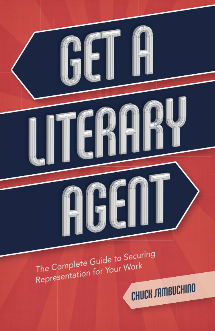
Your new complete and updated instructional guide
to finding an agent is finally here: The 2015 book
GET A LITERARY AGENT shares advice from more
than 110 literary agents who share advice on querying,
craft, the submission process, researching agents, and
much more. Filled with all the advice you’ll ever need to
find an agent, this resource makes a great partner book to
the agent database, Guide to Literary Agents.
Other writing/publishing articles & links for you:
You might also like:
The post New Literary Agent Alert: Aimee Ashcraft of Brower Literary appeared first on Art of Conversation.
January 8, 2017
Watch John Berryman’s Drunken 1967 Interview for the BBC
Tomorrow, January 7th, is the 45th anniversary of the day John Berryman jumped off the Washington Avenue Bridge, supposedly waving to onlookers on his way down. So today seems as good a day as any to revisit these clips of Berryman in conversation with Al Alvarez in Dublin in 1967 for a BBC program, a conversation for which he is apparently quite drunk. Drunk Berryman is still brilliant Berryman, but I must admit that for me, his slurred speech during this interview renders him by turns amusing and discomfiting. In the clips below, he talks about craft, Tolstoy, and his own work—including his famous alter-ego Henry—and reads from his Dream Songs 29 and 14. If nothing else, the footage is likely to inspire you to spend at least some of your Saturday with a copy of 77 Dream Songs, which is a pretty stellar way to spend a Saturday.
Article continues after advertisement
The post Watch John Berryman’s Drunken 1967 Interview for the BBC appeared first on Art of Conversation.



